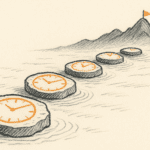Wake up, retailers. The writing’s on the wall.
A busy schedule means I don’t get out and about as much as I used to, so I jumped at the opportunity to go around Nairobi for a whole morning recently, looking for furniture and household items with the family. It would be a good chance to look at how our retailers are doing, I thought.
I came away empty-handed, annoyed and worried for their future. Zero purchases; and a trolley-full of aggravations.
All I saw, in shop after shop, were complacent businesses rooted in the past and exhibiting actual disdain for customers. It was truly baffling. For the benefit of those in the sector who actually care about survival, let me highlight two huge symptoms of decay. If you pay attention, you may avoid the fate of those who are exhibiting these two.
First, let’s talk about stagnation. One well-known furniture shop we visited looked exactly the same as it did in our last visit many years ago; it had pretty much the exact same products displayed in the exact same way. Now, I accept that there is something called a ‘classic look’, but I would also suggest that such an emphasis is fundamentally misplaced in a market populated by some of the world’s youngest people. Most other shops also looked like echoes from decades past. Do you know that global retailing underwent a revolution, people? Did you sleep through it?
Second, let’s mention customer experience fail. You know, what customers undergo when they try to buy from you. Do you have your products online, so that people can browse and pinpoint items of interest before coming? And do you actually sell online, or do you just display an outmoded subset of products? Do you employ assistants whose job is actually to help customers, rather than just keep an eye on them and guard the goods? Do you train your people in understanding your products, or are they just supposed to ask for the boss to intervene every time?
An example here: why would you display lamps for sale that are not connected to power? Why does the assistant have to fumble around plugging and unplugging every time a customer shows interest? Do you actually imagine anyone would buy a lamp without seeing how it looks switched on (because that’s kinda the point)? Or do you feel it’s a waste of money displaying things properly? Is selling things also a waste of money?
Any retailer displaying these two symptoms – stagnation and service failure – is playing with fire. If you can’t modernise your look and feel, can’t deploy smart and helpful people, can’t move on to a ‘bricks and clicks’ model that makes the most of both physical and virtual locations – then you’re really in the wrong business.
What’s causing this malaise? Partly, it’s just ageing owners who have failed to evolve. So many shops still had the founder-figure still in control, still calling the shots, still wanting to be at the centre of things, still living in the seventies and eighties. There was little evidence of fresh blood, fresh thinking. Partly, I wonder whether these shops are actually the real business, because it’s hard to see how any money is being made.
If you are a long-standing retailer, please realise you are in mortal danger. Many big global names – Sears, Toys R Us, House of Fraser, Debenhams – are falling or are in severe distress. Why? Because they were in denial for too long about the looming threat of online shopping; and because they failed to keep pace with the changing trends of their customers. They failed to invest in new people and new looks, and became consigned to the past.
That’s going to happen here, too. The retailers who survive and thrive will create interesting blends of virtual and in-store shopping experiences; they will use data analysis to stock and sell the right goods at the right price points; and they will seek out gaps in the market and fill them in fresh new ways. It’s already happening in Nairobi; more will spot the opportunity and take it.
The rest of you? Carry on carrying on. Stock the tired old stuff and pretend to sell it. Don’t invest in sharp people or sharp technology. Talk about the good old days. We’ll see you around. Actually, we won’t, because we’ll all be buying from elsewhere.
(Sunday Nation, 1 September 2019)
Sunny Bindra’s new book, The Bigger Deal, is now on sale.
Photo by Tim Mossholder on Unsplash

Buy Sunny Bindra's new book
The X in CX
here »
Popular Posts
- Where are you rushing to—your funeral?June 29, 2025
- The map will appear—once you start walking.July 6, 2025
- How to spot a real thinkerJune 15, 2025
- Built the app, forgot the flowJune 22, 2025















